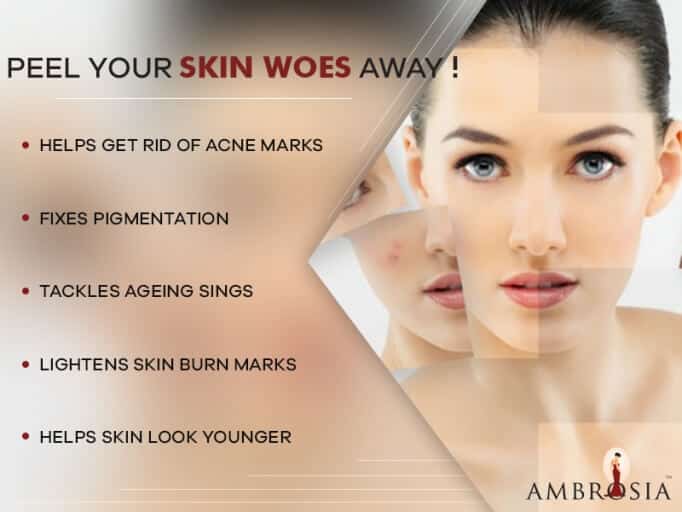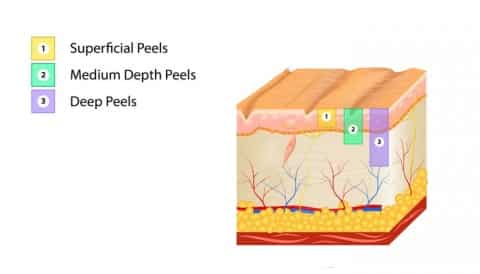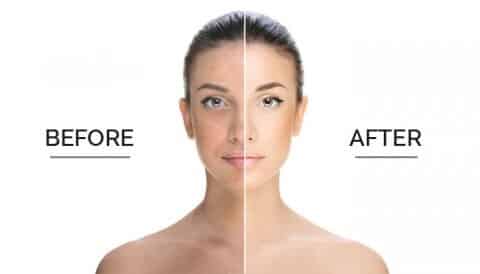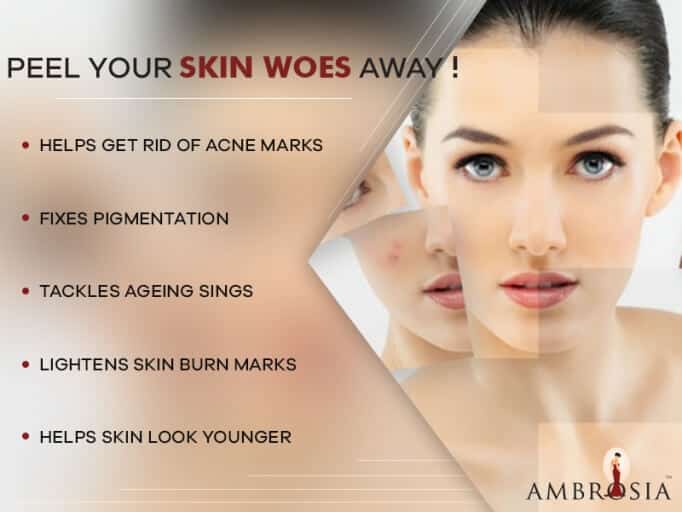
Chemical Peels: Have you ever imagined causing damage to your skin to bring out the beauty lying underneath? No? Then it’s time for you to understand all about chemical peels! Even though it sounds a lot like the usual peel off masks many of your friends would have used to get their skin to glow and look flawlessly beautiful, chemical peels in reality are a way of killing your existing tissues in a controlled manner.
Killing your tissues? Now, you might be wondering what sort of beauty treatment that is. Administered in controlled quantities, toxic materials are used to produce controlled damage. Control is the operative word here, which means that this procedure is best performed by doctors with expertise and reputation.
Chemical Peels: Now, you’d ask how would the damage help. The whole procedure revolves around the fact that that once the skin is ‘damaged’, it will begin to regenerate or heal. What this healing process does is help the skin become younger, concealing scars or helping the skin tone become more uniform, in case you have pigmentation. Now the idea is becoming clearer, isn’t it?
What the different types of chemical peels?
Chemical peels are chosen on the basis of the requirement of the patient ie., the condition to be treated. Essentially, there are three types of chemical peels: Superficial peels (that work on the epidermis), medium depth peels (that work on the superficial layer of the dermis) and deep peels (that work on the deeper layer of the dermis). Let’s understand more about them.

Superficial peels
Chemical Peels: These are the mildest chemical peels there could be. These peels work on the epidermis, the superficial layer of the skin, and do not penetrate beyond that. They typically contain alpha hydroxy or beta hydroxy acids, along with glycolic acid, lactic acid and salicylic acid. In fact, thanks to going organic and natural these days, many chemical peels also come boosted with natural acids from pineapples, pumpkins and even cranberries. Yum!
- Suitable for: Superficial peels work wonderfully on fine lines and wrinkles, minimising them. They also deal with sun damage, mild acne scarring, age spots and dry or flaking skin.
- The procedure: The procedure begins by cleaning the skin, and then applying the peel, often in the form of a liquid or paste, using either a brush or a cotton tip, and is left for several minutes, depending on what the chemical is. The chemical reaction will be halted using either water, or alcohol. This is the least time consuming procedure.
- Recovery: The recovery time is close to nil and you can resume routine work immediately. The skin will become slightly pink but nothing that well-done make-up can’t hide!
Medium depth peels
Chemical Peels: These peels are slightly stronger compared to the superficial peels. Working on the superficial layer of the dermis, the agent used for this type of peel is Trichloroacetic acid (TCA).
- Suitable for: If you have adamant skin issues like like pigmentation, sunburn and so on, you could consider medium depth peels.
- The procedure: These peels are executed the same way as superficial peels are, except for the fact that they are stronger and you might experience a burning sensation. Medium deep peels are also left on the skin for a longer duration, so that they soak deeper into the skin. Depending upon your requirement, you might also be given a pain reliever and an oral sedative, just to keep you at ease.
- Recovery: You will take at least five to seven days to recover from a session of medium depth peels, but you will not feel any pain after the procedure is done. In two-three days, your skin will become crusty and will begin to peel off. Even though the redness will take a bit longer to fizzle out.
Deep peels
Chemical Peels: Before we move ahead with this, let me tell you that this is the most painful of the three. These peels penetrate deep into the skin and leave a burn. Using phenol, these peels are usually executed only on facial skin.
- Suitable for: These type of chemical peels are used for coarse facial wrinkles, large patches of discoloured skin due to ageing or sunburn and pre-cancerous growths.
- The procedure: You will be given oral sedatives and pain relievers. You might also be administered general anesthesia, intravenous (IV) fluids and might be put on a heart monitor. Your skin will be cleaned and the peel will be applied and left for sometime. If there is a larger area to be treated, then once the peel is removed, you will be given a break of 15 minutes, before the next area is treated, because phenol is toxic and the skin shouldn’t receive it in big doses. Once the treatment is done, it will be followed by the application of ointment of tapes. Ointment can be removed in 24 hours, while the tape will stay for two days.
- Recovery: The recovery time for deep chemical peels are longer, because of the deep burn they cause to the facial skin. While complete recovery might take upto two months, you could safely assume that you will need at least a 15-day break from work. The skin will start growing back in close to 15 days, and will remain very red for the first three weeks. You might experience pain, for which you will be asked to take oral pain relievers, and you might also have swelling around your eyes.

While there is so much that chemical peels can offer, one thing is to be noted here: such treatments are to be taken under the supervision and expertise of experienced doctors. There are several guidelines laid out for the benefit of patients.
“PHYSICIANS’ QUALIFICATIONS: The physician performing chemical peeling should have completed postgraduate training in dermatology. The training for chemical peeling may be acquired during post graduation or later at a center that provides education and training in cutaneous surgery or in focused workshops providing such training. The physician should have adequate knowledge of the different peeling agents used, the process of wound healing, the technique as well as the identification and management of complications.
FACILITY: Chemical peeling can be performed safely in any clinic/outpatient day care dermatosurgical facility.”
This is why, you should conduct a thorough research on qualified doctors and the facilities they have, before going in for chemical peels.
About the Clinic and Doctor
Dr. Priti Shukla is the best female cosmetic surgeons in Hyderabad. She has 18 years of experience in cosmetic plastic surgery and thousands of satisfied patients. Ambrosia Clinic is leading skin plastic surgery clinic of Hyderabad since 2009. Our team of dermatologist and Plastic surgeons at Ambrosia clinic offer services like hair transplantation, laser, skin care and plastic surgery.





